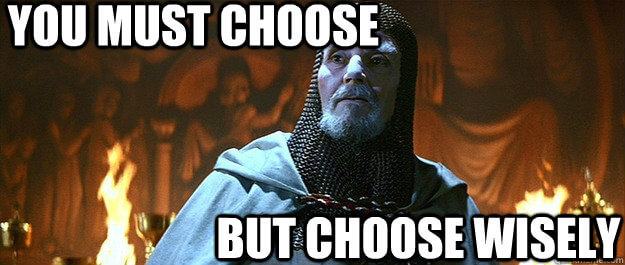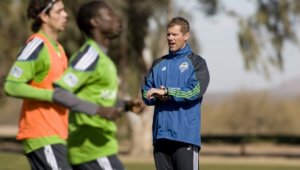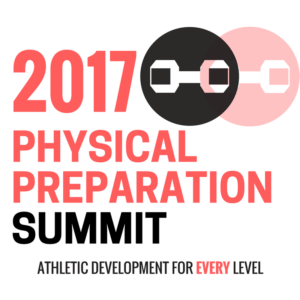A while back, I was really frustrated with my retention when learning new materials.
It wasn’t like I was totally failing to retain information, it was more that I wasn’t retaining at the level I’d like.
The obvious example was speed and agility work, something that I’ve been working diligently on for the past couple of years.
I was reading all the right stuff, watching the right videos, and learning from the right people.
But something was still “off.”
So rather than continuing to beat my head against a wall, I decided to take a step back and reflect on what I was missing.
Here’s what I came up with…
The Big Issue With My Learning
As I mentioned above, I felt like I was doing many of the right things when it came to my coaching development.
But one of the biggest issues was that I failed to create context, or really apply, what I was learning.
For example, if I was trying to learn muscular anatomy for the 1000th time (which is only a slight exaggeration), I would read about all the different parts of the muscle.
The sarcomeres.
The individual muscle fiber.
The action and myosin filaments.
But those are just words on a page. There’s no context, or relevance, as to how it applies in my world.
Maybe I should have done some visualization, colored in a coloring book, or drawn the various elements to have a better understanding.
Now I’m sure people smarter than me have created some fancy name for this. Whether you want to call it “deep learning,” “contextual learning,” or something else doesn’t matter to me.
The fact of the matter is you need to find as many ways to create context or relevance to a topic if you really want to understand and retain it.
As such, here’s my simple, four-step process to learning anything faster and more efficiently.
Step #1 – Learning the Right Things (And From the Right People)
When it comes to your brain, I’d be very selective about who you learn from.
It reminds me of this famous quote from “Indiana Jones and the Last Crusade”:

If you think the random bro on the Internet or your Instagram hero is leading you in the right direction, you’re sorely mistaken.
In fact, I’d imagine a lot of coaches are working incredibly hard learning the wrong things because they don’t have a filter.
So the first step is to seek our and identify trusted experts in your specific area of learning.
Want to learn about speed and agility? Go with Lee Taft.
Want to learn about conditioning? Look no further than Joel Jamieson.
This can’t be glossed over – if you don’t have a filter of your own to pass things through, it’s very hard to determine who actually knows what they’re talking about.
Take someone else’s system and apply it was your own early-on. There’s no shame whatsoever in doing this.
Once you’ve identified your trusted experts, it’s time to start learning everything possible from them.
Step #2 – Take Meticulous Notes (By Writing)
I know in this digital age doing anything by hand seems archaic, but I guarantee there’s a method to the madness.
I want to take all my notes by hand, first and foremost. I think there’s a lot of value in taking in information, writing it with your hand, and seeing it on the paper.
Then once I’m done, I’m going to take all that information and type it into my computer so that I actually see it a second time.
When I’m learning anything new, I’m trying to create numerous neural pathways and connections to help me retain the information. To do this, I want to repeat the same task several times over, each in a slightly different way.
Repetitive? Yes
Redundant? Incredibly.
Beneficial? You betcha.
At this point in time, I want to increase my workload.
I want to see the same things time and again.
Because I know if I do this, I’ll have a greater understanding of not only what that coach is doing, but the why behind it.
This actually just happened to me yesterday. I was going through my speed and agility progressions, and fine tuning how I want to program and lay out various training days.
As such, I was reviewing Lee’s Complete Speed Certification and writing everything down, and I started putting together various pieces of the puzzle that I hadn’t done it before.
Much like a jagged rock, if you only look at one side, you don’t truly appreciate all the different contours and colors.
But if you take that very same rock and spin it around in your fingertips, now you have a new found appreciation for all the layers and complexities behind it.
Step #3 – Applying Concepts and Creating Context
So here’s the defining moment, and where a lot of coaches are going wrong.
They are so attracted to the thought of more knowledge, tips, and tricks, they never actually take that deep dive and get into the nitty gritty details.
Nassim Taleb calls these people IYI’s: Intellectuals, But Idiots.
They have tons of what we’d consider book knowledge and intelligence, but they don’t have that filter to truly understand why something would (or wouldn’t) work in reality.
The application of a concept is critical for securing and cementing those neural pathways. Once you have a basic understanding of how something should work, you have to get in the gym and see if it actually works that way!
Coach people up.
Let them make mistakes.
And most importantly, make mistakes yourself.
The first two steps help us create a model for how an athlete should move. But we all know that all models are wrong, but some models are useful. (Thank you George Box.)
Now we get to apply our coaching to that model, and we start to see that while we would like an athlete to move a certain way, this isn’t always the case.
And furthermore, this adds a newfound depth to our perspective as well.
It challenges the model, and forces us to be creative and develop new strategies to get the desired result.
While you’re doing this, I would highly recommend videotaping everything you do. This will not only serve you will during the session (for feedback purposes), but will all you to further review the training session later on.
Step #4 – The Debrief and Recap
 This is one of the most powerful tools you have in your arsenal. But I will also admit, it’s arguably the easiest to gloss over as well.
This is one of the most powerful tools you have in your arsenal. But I will also admit, it’s arguably the easiest to gloss over as well.
I got serious about the “Debrief” after chatting with Dave Tenney for my Physical Preparation Podcast. He mentioned how the team was doing this on the regular, and why it was such an important aspect of their day.
As such, I’ve made it a goal to sit down either at the end of a training session, or worst case, at the end of my day, to debrief and recap.
- What things went well and according to plan?
- What things did not go well? And how can I improve upon this in the future?
- What are the next steps in my progression? And where we do go from here?
Taking the time to look back on a session after the fact is really critical, and gives you deeper insight as to where you’re progressing, and what you can continue to improve upon.
Summary
 So there you have it – my current thoughts on improving the depth and quality of your learning.
So there you have it – my current thoughts on improving the depth and quality of your learning.
And I will add one thing to this mix (and yes -it’s selfish)…
But being live and in-person when you learn is almost always preferable to doing it remotely.
And with that being said, today we are opening the doors to our 2017 Physical Preparation Summit.
I guarantee this is going to be our best event yet, and with numerous fast action bonuses, it just makes sense to get registered ASAP.
If you’d like to learn more, simply follow the link below:
The 2017 Physical Preparation Summit
All the best
MR

